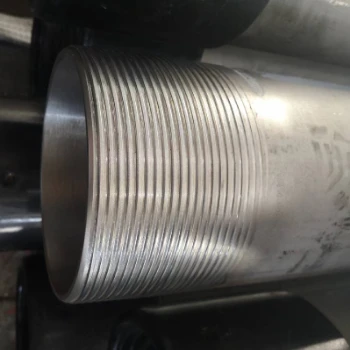- Afrikaans
- Albanian
- Amharic
- Arabic
- Armenian
- Azerbaijani
- Basque
- Belarusian
- Bengali
- Bosnian
- Bulgarian
- Catalan
- Cebuano
- Corsican
- Croatian
- Czech
- Danish
- Dutch
- English
- Esperanto
- Estonian
- Finnish
- French
- Frisian
- Galician
- Georgian
- German
- Greek
- Gujarati
- Haitian Creole
- hausa
- hawaiian
- Hebrew
- Hindi
- Miao
- Hungarian
- Icelandic
- igbo
- Indonesian
- irish
- Italian
- Japanese
- Javanese
- Kannada
- kazakh
- Khmer
- Rwandese
- Korean
- Kurdish
- Kyrgyz
- Lao
- Latin
- Latvian
- Lithuanian
- Luxembourgish
- Macedonian
- Malgashi
- Malay
- Malayalam
- Maltese
- Maori
- Marathi
- Mongolian
- Myanmar
- Nepali
- Norwegian
- Norwegian
- Occitan
- Pashto
- Persian
- Polish
- Portuguese
- Punjabi
- Romanian
- Russian
- Samoan
- Scottish Gaelic
- Serbian
- Sesotho
- Shona
- Sindhi
- Sinhala
- Slovak
- Slovenian
- Somali
- Spanish
- Sundanese
- Swahili
- Swedish
- Tagalog
- Tajik
- Tamil
- Tatar
- Telugu
- Thai
- Turkish
- Turkmen
- Ukrainian
- Urdu
- Uighur
- Uzbek
- Vietnamese
- Welsh
- Bantu
- Yiddish
- Yoruba
- Zulu
Understanding the Importance of Finished Casing Couplings in Oil and Gas Operations
Understanding Finished Casing Couplings An Essential Component in Oil and Gas Operations
In the oil and gas industry, finished casing couplings play a pivotal role in ensuring the integrity and functionality of wellbore casing systems. As crucial components, these couplings are designed to connect the lengths of casing pipes, ensuring a secure and effective seal that can withstand high pressures and harsh downhole conditions. This article explores the significance, design, functionality, and considerations involved with finished casing couplings.
What are Finished Casing Couplings?
Finished casing couplings are short lengths of pipe that provide a connection between sections of casing in drilling operations. The primary function of these couplings is to join two pieces of casing together, allowing for the continuous length needed to reach the desired depth of the well. They are crafted with high precision to ensure that they can withstand the extreme conditions typically encountered in oil and gas wells, including high pressures, abrasive materials, and corrosive fluids.
Design Features and Specifications
The design of finished casing couplings is not arbitrary; it follows strict engineering standards to ensure reliability and safety. These couplings are often made from high-strength steel, which is critical for managing the stresses involved in deep well explorations. The ends of the couplings are usually machined to create specific thread types that will fit securely with the casing pipes. Various standards, such as API (American Petroleum Institute) specifications, govern the dimensions and manufacturing processes for finished casing couplings, thus maintaining uniformity across the industry.
Importance in Well Integrity
One of the most important functions of finished casing couplings is to maintain the integrity of the wellbore. A well's casing is designed to isolate the oil and gas reservoirs from the surrounding rock formations, preventing any unwanted contamination of groundwater and ensuring a safe extraction process. Properly designed and installed couplings reduce the risk of leaks, which could lead to catastrophic environmental damage and financial loss. This aspect of well integrity is a critical concern for operators, as drilling operations can be subject to regulatory scrutiny and public concern.
finished casing coupling

Installation Process
The process of installing finished casing couplings is straightforward but requires expert knowledge and careful handling. The coupling is aligned with the ends of two casing pipes, and special tools are used to apply torque to the threads, ensuring a tight fit. It is important to follow the manufacturer’s specifications during this process to prevent any potential issues that could arise from improper installation. Skilled personnel using the correct techniques can mitigate the risks of failure during operation.
Challenges in the Field
Despite the robust design of finished casing couplings, several challenges can arise during their use in the field. Issues such as thread wear from repeated installations, corrosion due to harsh environments, and mechanical loads can compromise their effectiveness. Additionally, in the case of unconventional drilling techniques, such as horizontal drilling, the stresses on couplings can be significant, necessitating the use of advanced materials and designs to enhance their durability. Continual monitoring and maintenance are essential to prevent failure and ensure optimal performance.
Innovations and Trends
The oil and gas industry is continually evolving, and new technologies are driving advancements in the design and manufacturing of finished casing couplings. Innovations such as enhanced materials, coatings for corrosion resistance, and improved thread designs are making couplings more durable and reliable than ever. Furthermore, the use of simulation software and non-destructive testing methods during the production process can help identify potential weaknesses before the couplings reach the field.
Conclusion
Finished casing couplings are an indispensable component of oil and gas drilling operations. Their role in ensuring the integrity and safety of wellbore systems cannot be overstated. As the industry seeks to navigate the challenges of increased depth, pressure, and environmental concerns, advancements in the design and materials used for these couplings will be essential. Understanding their importance, along with proper installation and maintenance practices, is crucial for any operator in the oil and gas sector focused on safety and efficiency. The future of finished casing couplings looks promising, with ongoing innovations enhancing their functionality and reliability in the ever-demanding world of oil and gas extraction.
-
Tubing Pup Joints: Essential Components for Oil and Gas OperationsNewsJul.10,2025
-
Pup Joints: Essential Components for Reliable Drilling OperationsNewsJul.10,2025
-
Pipe Couplings: Connecting Your World EfficientlyNewsJul.10,2025
-
Mastering Oilfield Operations with Quality Tubing and CasingNewsJul.10,2025
-
High-Quality Casing Couplings for Every NeedNewsJul.10,2025
-
Boost Your Drilling Efficiency with Premium Crossover Tools & Seating NipplesNewsJul.10,2025







